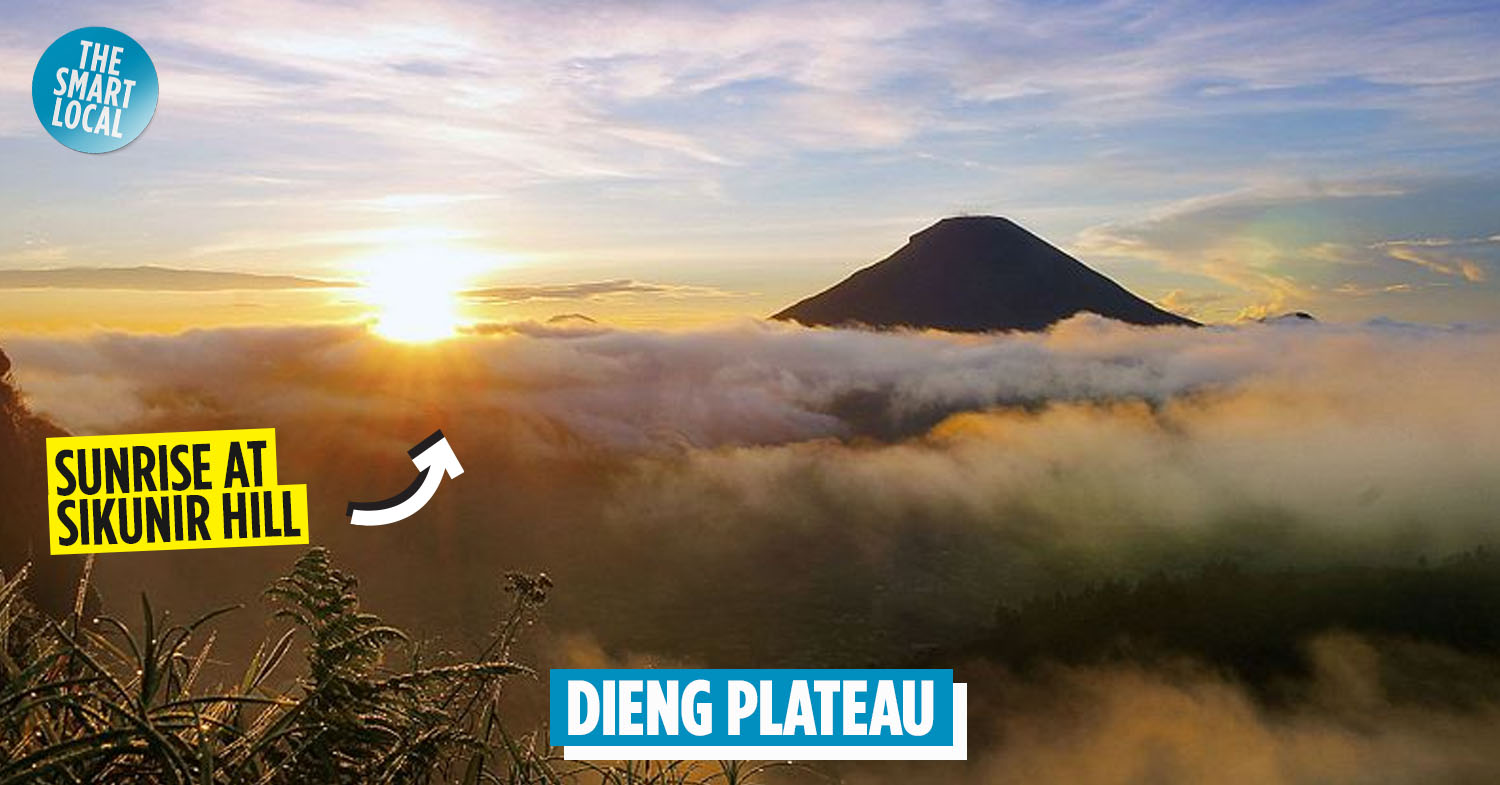Dieng – a Javanese holiday destination
A volcanic plain located 2,000m above sea level, the Dieng Plateau (usually shortened to just “Dieng”) is a popular getaway for Indonesians seeking a short holiday to escape the heat and city bustle of nearby Yogyakarta and Semarang.
Dieng is renowned for its sunrise-catching spots, hiking trails passing by friendly farming communities, ancient temple ruins, and colourful volcanic lakes. The word “Dieng” in Indonesian translates into “Abode of the Gods” – a fitting description of the unearthly beautiful scenery the area has to offer.
Being in the rural highlands, Dieng has comfortable sweater weather during the dry season between April and October, where temperatures reach an average high of 18.5°C. However, this can drop to a chilly 8-10°C at night, so bring a warm jacket and hiking shoes when you visit.
Here are 4 things you can do at Dieng that make this place a must-visit the next time you’re in Central Java.
1. Catch the famous Golden Sunrise
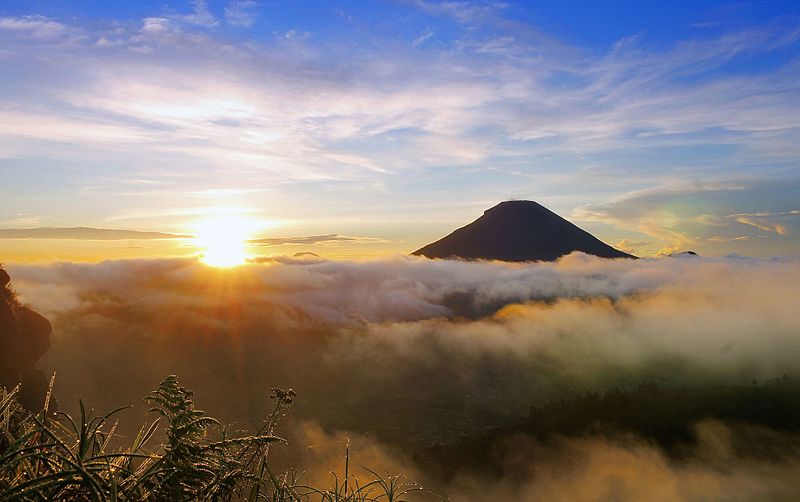
Image credit: Hadiwibowo/Wikimedia Commons
Recommendations to catch the sunrise when you visit an attraction known for its natural beauty may sound clichéd, but your experience at Dieng will be anything but. That’s because the sunrise which you can see at Sikunir Hill (Bukit Sikunir), known as the Golden Sunrise, is renowned for its unusual beauty.
As the sun rises, the golden sunbeams create a stunning contrast with shadows cast by the nearby Mt Merbabu, Mt Merapi, Mt Sindoro, and Mt Sumbing. At this vantage point, you can also take incredible panoramic shots with an unobstructed bird’s-eye view of the lowland rice terraces and surrounding mountains.
To catch daybreak on time, aim to reach the observation pavilion on Sikunir Hill’s peak no later than 5AM. This requires a 20 to 40-minute trek from Sikunir Village at the base of the hill, but the route is easy and straightforward with handrails and well-defined steps.
It will be dark and cold in the early morning, but you will pass by huts that sell piping hot coffee and tea that you can grab on your way up the peak.
2. Visit Dieng’s friendly villages while trekking through nature
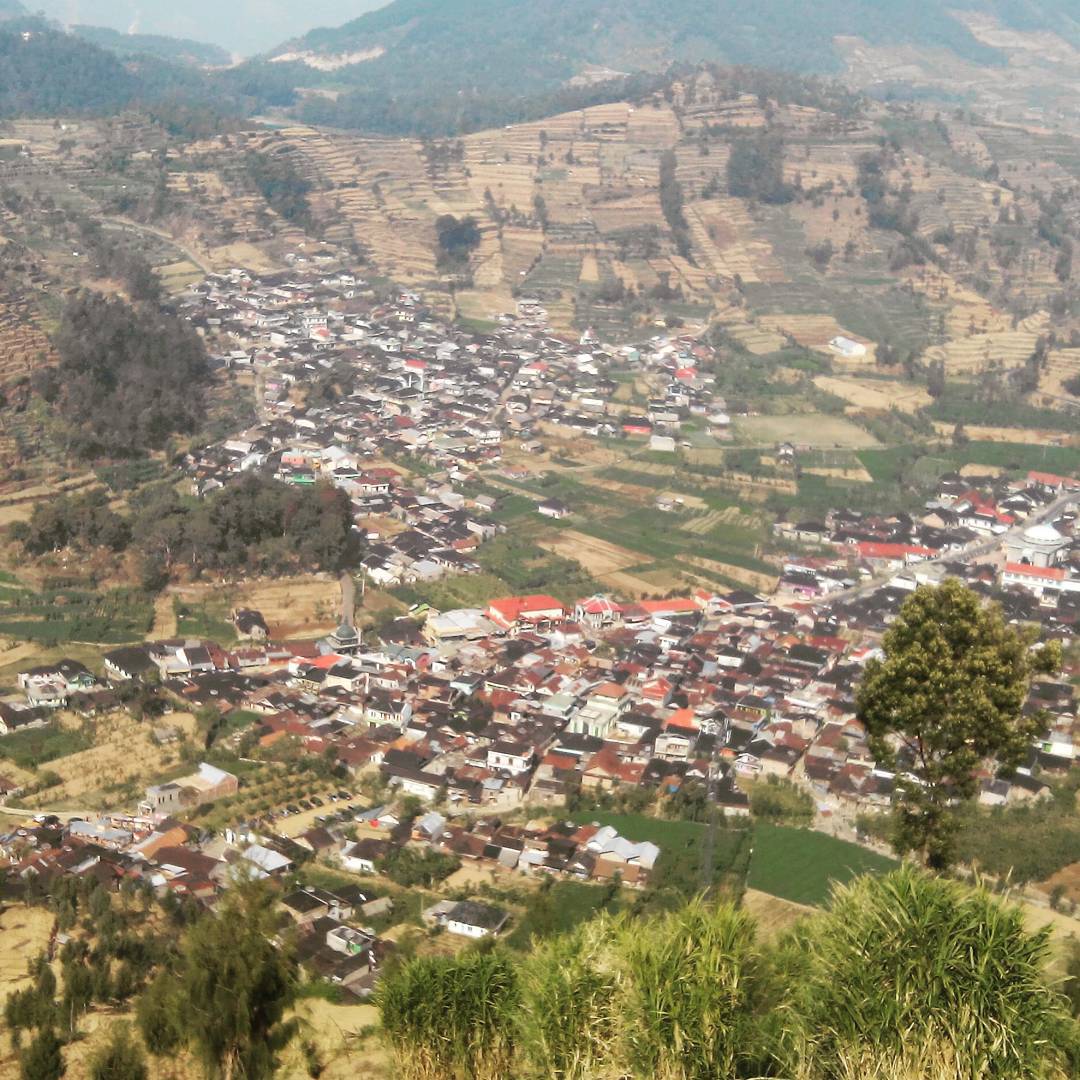
Dieng Village
Image credit: @mrafifaizun
For a truly immersive experience, take the time to bathe in the natural scenery and explore the local villages by foot. A good starting point is Dieng Village (Dieng Kulong), the main village here. Walk along Jalan Dieng – this road connects various places of attraction, including the Arjuna Temple Complex and the Twin Lakes that lie south and southeast respectively, of the village.
As you trek, the natural mountain landscapes that surround you will be accentuated by sprawling rice terraces and lush vegetable fields, children playing in village communities, and the ruins of ancient temples. Combined with the cool weather, you will not have to worry about sweating even in the midday sun.
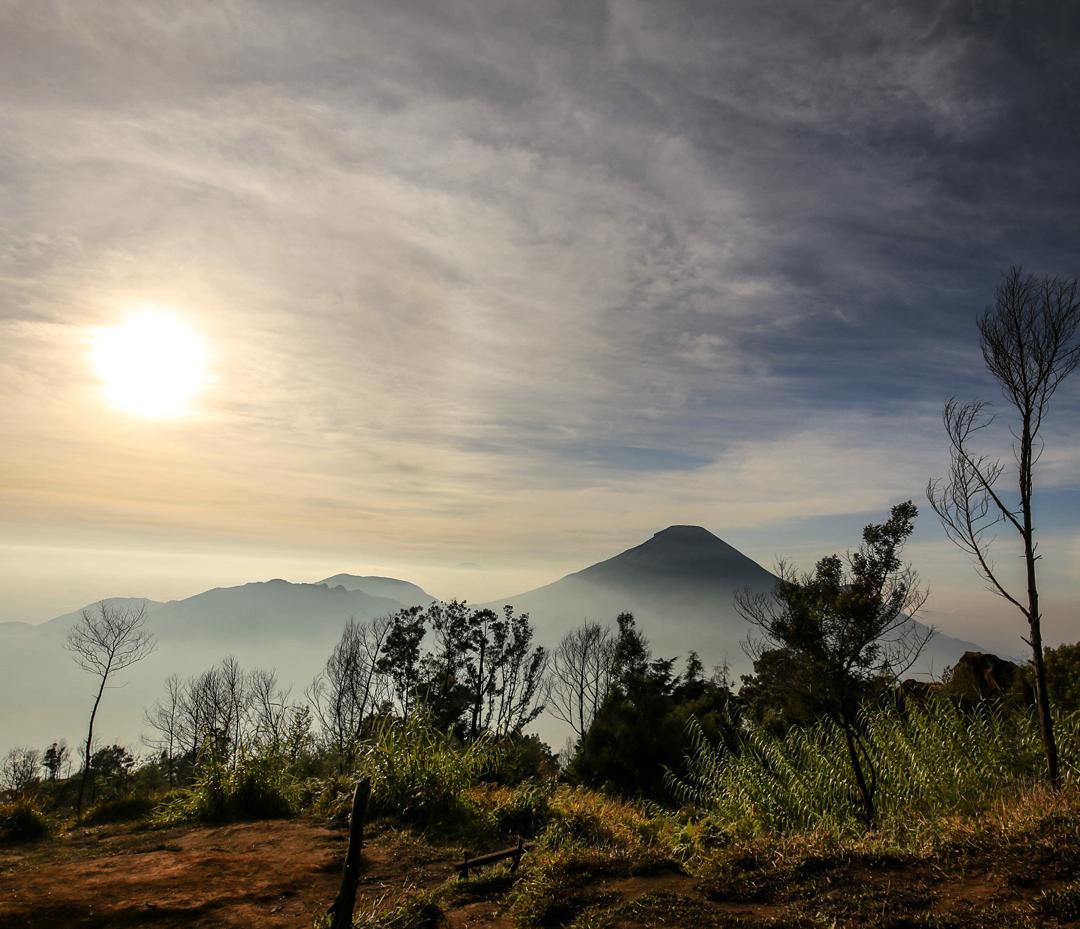
Mount Sikunir
Image credit: @zainahthedesigner
If you are on the way back from Mount Sikunir after observing the Golden Sunrise, you will pass by Sembungan Village. You will notice an abundance of potato plantations as this village used to be considered poor until potatoes, which thrived in the cool climate and fertile soil of the Dieng Plateau, were introduced as crops.
Visit the local warungs (shops) for a refreshing cup of hot coffee to help you recharge on your trekking adventures!
3. Get IG-worthy shots at the colourful volcanic lakes
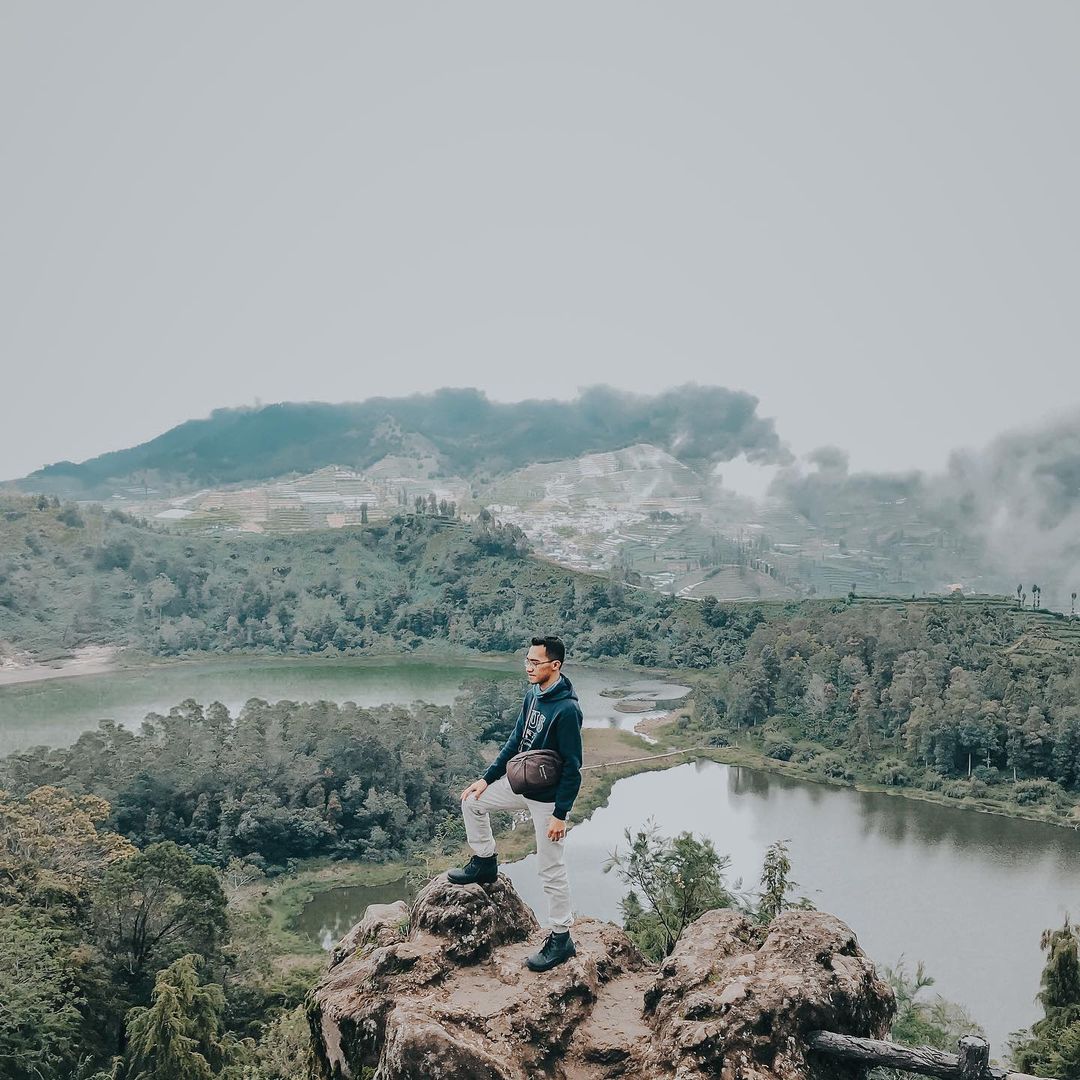
Telaga Kembar’s twin lakes as viewed from Batu Ratapan Angin
Image credit: @cehassss
The ancient Javanese believed Dieng to be the realm of gods and deities, and the vibrant colours of the sulphur lakes make it easy to see why. There are 6 lakes in the Dieng Plateau but the most enchanting of them are a pair of lakes sitting side by side, called the Twin Lakes (Telaga Kembar).
The first lake, the Colourful Lake (Telaga Warna), is known for its colour-changing waters that vary between blue, green, and even yellow and purple at times. This occurs because of the high sulphuric concentration of the lake, which reflects various colours when exposed to direct sunlight.
The second lake, Telaga Pengilon, is named the Mirror Lake in Javanese for its crystal clear waters and calm surface. Avid birdwatchers can try their luck at spotting the uncommon Pacific Black Duck, which is endemic to the area.
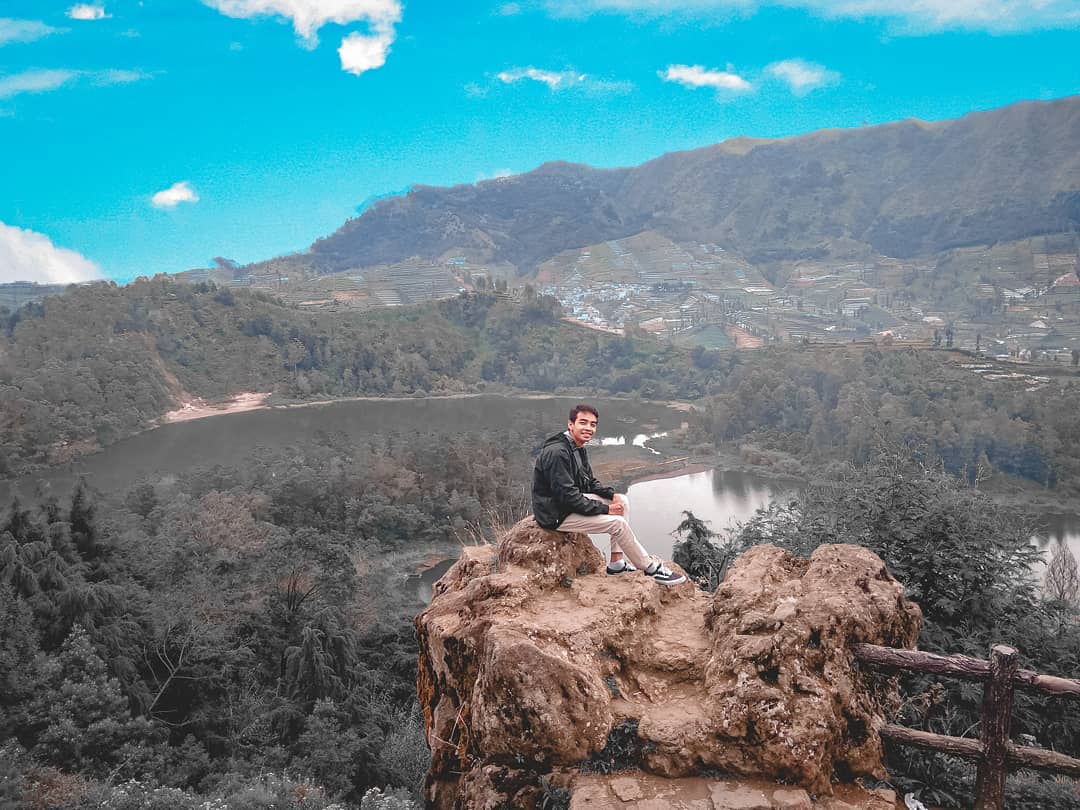
Batu Ratapan Angin
Image credit: @huseinmahmud__
For a good vantage point of the Twin Lakes, walk up the hill beside it, called the Rock of the Wailing Wind (Batu Ratapan Angin). The name comes from the howl made when the wind blows through gaps in the rock.
Local Dieng residents have built several amenities that make for good IG-worthy selfies and pictures with bae, including a rope bridge and swings, whilst retaining the unobstructed view. This makes for aesthetic and memorable pictures, especially during the evening golden hours.
4. Visit some of the oldest temples in Indonesia
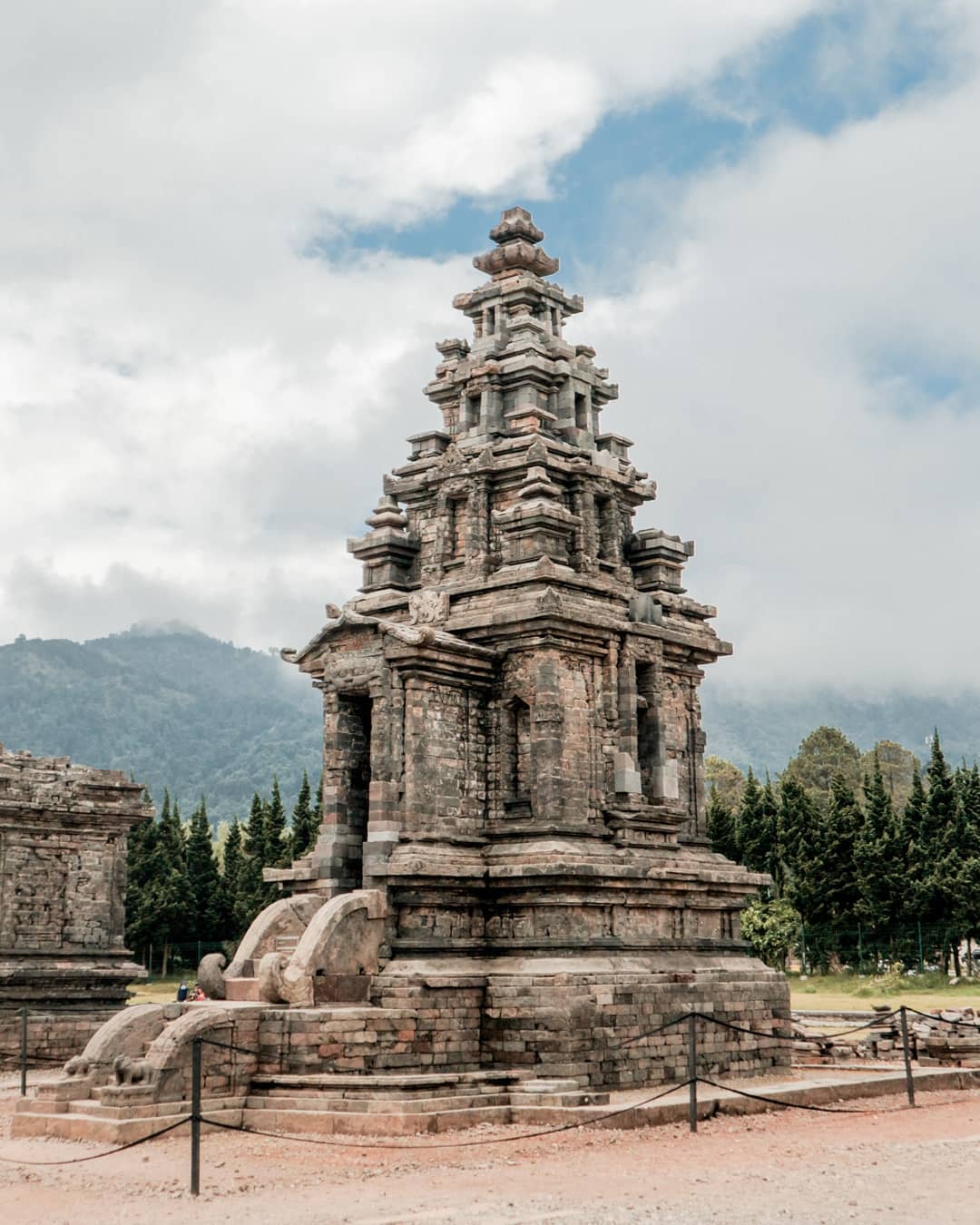
Part of the Arjuna Temple Complex
Image credit: @mastorydoyanmoto
History lovers will be enchanted by Dieng’s ancient Hindu temples, which were built in the 8th century by the Sanjaya dynasty of the Mataram Kingdom.
The Arjuna Temple Complex (Kompleks Candi Ajuna) is the most intact of Dieng’s surviving temple complexes. Hundreds of temples used to exist throughout the Dieng Plateau, but only 8 remain, as the rest have been lost with age and exposure to the elements.
Arjuna, Srikandi, and Bima are three of the most famous temples within this complex. They are named after characters in the ancient Hindu epic, the Mahabharata. Observe the intricate stone carvings of Hindu gods such as Vishnu, Brahma, and Shiva on the temples, that have withstood the passage of time.
The Dieng temples resemble the famous Prambanan in Yogyakarta in terms of architectural style. They are smaller than Prambanan, but are also far less crowded. This allows you to take amazing landscape shots of the temple complex without other tourists getting caught in the frame, helping your photos to achieve the road-less-travelled vibe.
Getting to Dieng
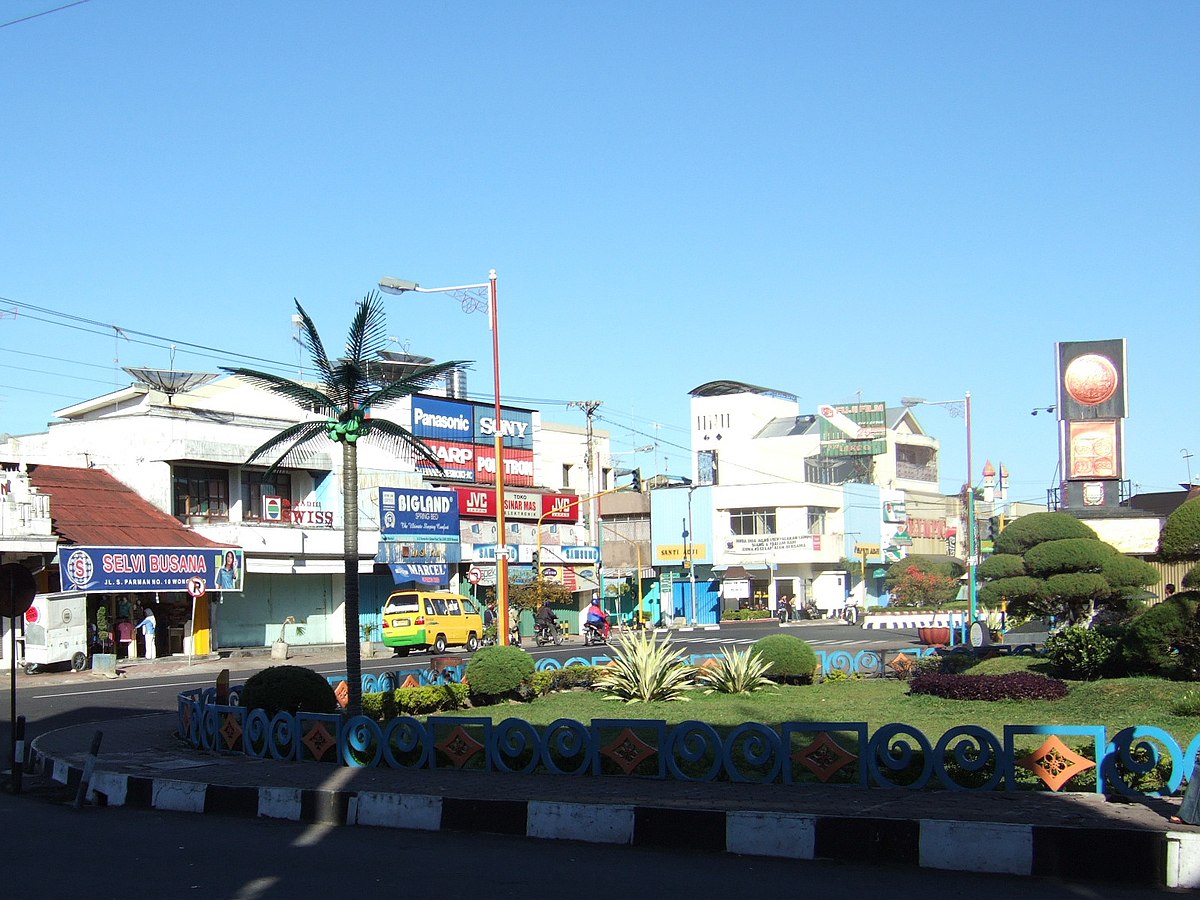
Downtown Wonosobo
Image credit: Midori/Wikimedia Commons
Visitors usually travel by car to Dieng from either Yogyakarta or Semarang. The journey takes about 3 hours and is the quickest and most recommended route for travellers.
Another alternative is to take the local bus from the inter-city bus terminals in Yogyakarta or Semarang, bound for the town of Wonosobo. The journey takes about 5 hours. Travellers from Yogyakarta will have to alight at the city of Magelang, before transferring to Wonosobo.
Wonosobo is the closest major town to the Dieng Plateau, and is located one hour’s drive from Dieng Village. Due to the long travel time from Yogyakarta or Semarang, it is recommended for travellers who wish to see the Golden Sunset at Sikunir Hill to stay overnight in a guesthouse at Dieng Village, or in a hotel at Wonosobo.
It is quite common for visitors to come to Dieng as part of a day trip from Yogyakarta or Semarang, if catching the Golden Sunrise is not on their itinerary.
Experience a peaceful mountain getaway at Dieng
Dieng’s relative proximity to the huge Indonesian tourist hubs of Yogyakarta and Semarang make it accessible whilst still putting it off the major tourist trail for international travellers.
This mountain paradise is an ideal retreat to recharge and enjoy peace, quiet and serenity. Interact with the friendly locals and immerse in the natural beauty. Take this opportunity to spend some quality time with bae, your friends and family, or even yourself!
Also check out:
- 8 things to do in Semarang
- 8 beginner-friendly hiking trails in Indonesia
- 8 stunning waterfalls in Indonesia
- 8 lakes in Indonesia
Cover image adapted from: Hadiwibowo/Wikimedia Commons
This article was produced in collaboration with National Youth Council Singapore‘s Asia-Ready Exposure Programme.

